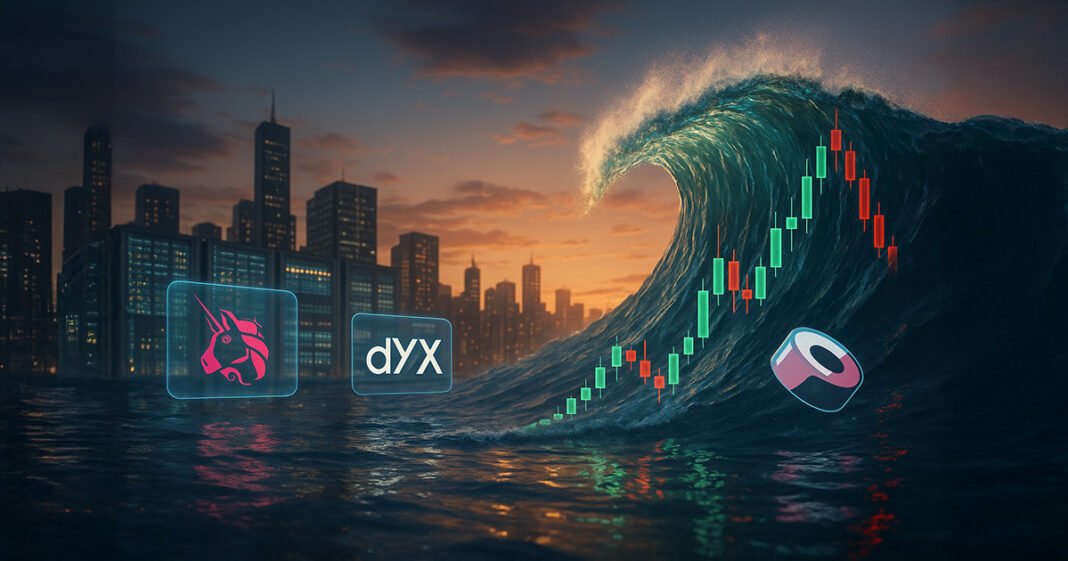Perp DEXes Hit $1 Trillion Milestone
Record Volumes Amidst Market Volatility
Data from DefiLlama confirms the surge, reporting roughly $1.241 trillion in 30-day volume by late October. This explosion in activity was significantly influenced by a severe market downturn earlier in the month, triggered by geopolitical announcements which created the largest liquidation event in crypto history.
On October 10th, perp DEX volume peaked at approximately $78 billion, dwarfing early-October baseline figures. The spike was a direct result of leveraged positions being wiped out, sending shockwaves through both centralised and decentralised venues.
The Role of Incentive Programs
Beyond the volatility-driven surge, ongoing rewards programs, airdrop farming, and trading competitions have played a pivotal role in maintaining transaction volumes on perp DEXes. CoinGecko reported a surge in airdrop farming for tokenless perpetual DEXs, rewarding users with generous airdrop allocations.
Protocols like Arbitrum with its DRIP initiative and Synthetix, who launched a mainnet trading competition, are indicative of the types of protocol-level incentives that encourage repeated on-chain activity. These initiatives, featuring milestone-based unlocks, fee-sharing arrangements, and yield-bearing collateral options, have fundamentally altered the calculus for both market makers and retail traders.
Key Players and Market Share
Several platforms have emerged as notable players in this burgeoning market. Lighter recorded $193.1 billion in monthly volume, while Aster followed closely with $187.9 billion, both benefiting from the “perp DEX meta”. Hyperliquid, with its layer-1 blockchain, contributed roughly $316.4 billion and boasts over $7.5 billion in open interest, securing a significant market share.
Solana-based venues have also measurably impacted the October surge. Drift and other SOL-native perp platforms demonstrated impressive throughput, with Messari data revealing average daily volumes of approximately $1.8 billion for SOL perps.
Currently, Hyperliquid commands 25.5% of the perpetual DEX market share, followed by Lighter at 20.6% and Aster at 14.4%.
Implications and Future Outlook
Decentralised Derivatives: A Force to Be Reckoned With
The scale at which on-chain derivatives now operate positions them as a genuine rival to traditional centralised exchange activities. This shift brings significant benefits, including deeper liquidity pools, fee revenue distribution to token holders, and greater market-maker engagement on public blockchains.
However, the transition also carries systemic implications. Any failure in oracle feeds, risk engines, or chain liveness can now impact billions in open interest and daily volume measured in tens of billions. The October 10th event served as a critical stress test. Centralised exchanges such as Kraken, Coinbase, and Binance reported service instability, while most perp DEXes functioned as intended, processing liquidations without downtime, except for a brief halt in dYdX.
Regulatory Scrutiny and the Path Forward
As perp DEXes capture a greater share of the market, expect intensified regulatory attention, particularly concerning leverage ratios and user protection. Platforms like Aster, offering up to 1,001x leverage on certain pairs, combined with the widespread absence of KYC requirements, will undoubtedly face increased scrutiny from jurisdictions tightening rules on retail access to high-leverage products.
The Future is Purpose-Built
Looking ahead, we anticipate a proliferation of purpose-built app chains and rollups optimized for derivatives trading. The fee revenue and network effects demonstrated in October will fuel innovation and competition within the sector.
The sustainability of the recent surge will depend on several factors, including continued market volatility and the effectiveness of incentive programs in attracting and retaining users. The challenge lies in balancing user acquisition with the need to avoid diluting token value or depleting treasuries.
October 2025 was a defining moment, demonstrating that decentralised derivatives can operate at an institutional scale. However, this growth also brings increased responsibility, requiring careful consideration of technical resilience, regulatory compliance, and sustainable economic models as the sector continues to evolve.






